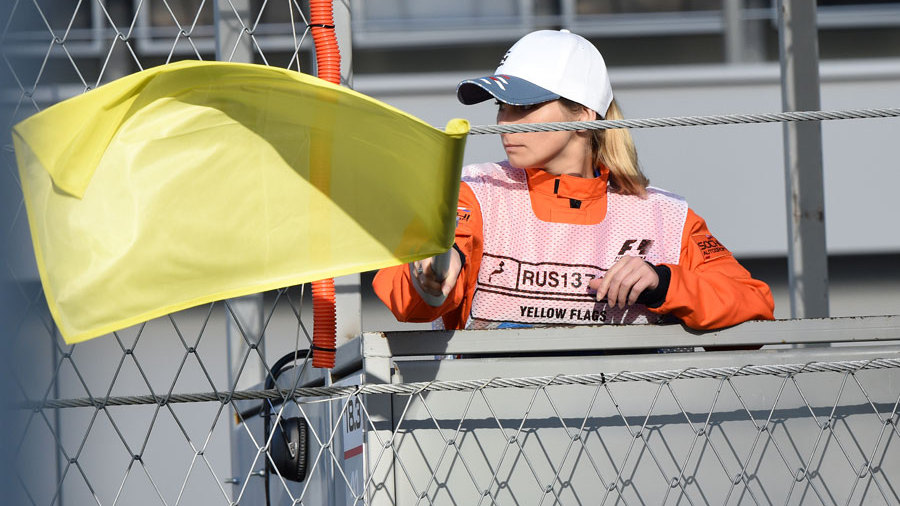- News
FIA suggests changes in wake of Bianchi accident

In the wake of Jules Bianchi's accident in Japan, the FIA is set to meet with teams on Saturday in Russia to discuss ways to ensure cars slow down under yellow flag conditions.
Bianchi crashed into a recovery vehicle while it was lifting Adrian Sutil's car away from the run-off zone on the exit of Turn 7 at Suzuka last Sunday. The impact left Bianchi with severe brain trauma and he remains in a critical condition in hospital.
While the FIA said Bianchi had slowed down for the double waved yellow flags at the scene of Sutil's accident, the amount each driver backs off in such conditions is currently down to their own discretion. FIA race director Charlie Whiting said the governing body wants to find a way to impose a speed limit on the cars and, although a new regulation is not likely to be enforced before next season, he will discuss ideas with the teams to slow the cars under yellow flags.
"I think there are some things to learn and we want to engage with all the teams and drivers to make sure that we come up with good, sound and well thought through ideas," Whiting said. "I think one of the most important things for us to learn is that it is probably better to take the decision to slow down away from the drivers.
"It's better to try to put in place a system where it is much clearer to everybody how much we think cars should slow down under similar circumstances. That's what we are working on starting tomorrow morning with a meeting of all the teams to discuss exactly that - a way of trying to impose, for want of a better expression, a speed limit. It probably won't be a speed limit as such, but it probably will be a way of controlling the speed with complete certainty and complete clarity."
A system already exists to slow cars when the safety car is deployed for a major incident. Drivers have to stick above a certain delta time to ensure they slow, meaning the race is effectively neutralised all around the circuit. Whiting believes a similar system could be enforced within certain sectors of the track to slow cars as they approach the scene of a yellow flag.
"What we could do is effectively pull a safety car but not actually send a safety car out. So, we'd do exactly what we do now, the drivers will all see the safety car delta on their dashboard and they will follow that. What normally happens now is that they have to follow that and keep positive [above the time indicated] to the safety car delta at the safety car one line, which is the safety car line before the pit entrance. So as long as they are positive by that point then they are legal.
"What we are thinking of doing is to extend that requirement so the driver has to be positive all the way through the double yellow sector. Taking Suzuka as an example, from Turn 6 you would have to be positive all the way through those two yellow sectors. That's one of a number of ways we are considering and there are a few ideas coming in from various sources."
With changes ahead of this weekend difficult, the FIA has underlined that it intends to use recovery vehicles with "extreme caution" this weekend. After meeting with the drivers, Whiting said the FIA would also consider ways to make the recovery vehicles safer.
"We had nearly an hour with the drivers earlier and one of the things that emerged from that, which has been discussed before but could be re-discussed, would be some form of skirt, for want of a better word, which would be similar to things you see on the road to stop cars going under the back. That's something we need to consider and something we are going to consider."